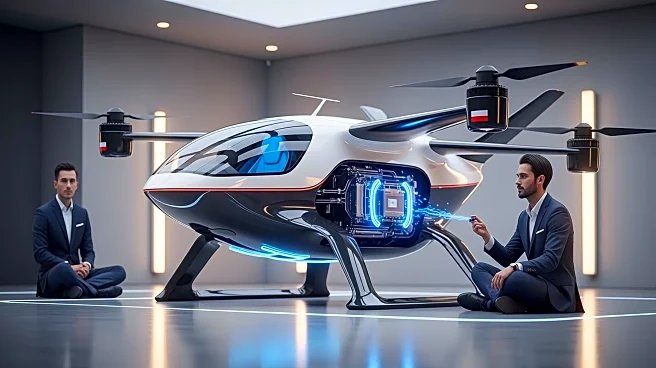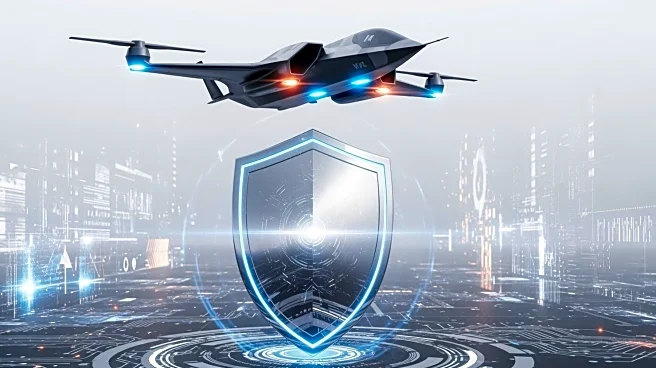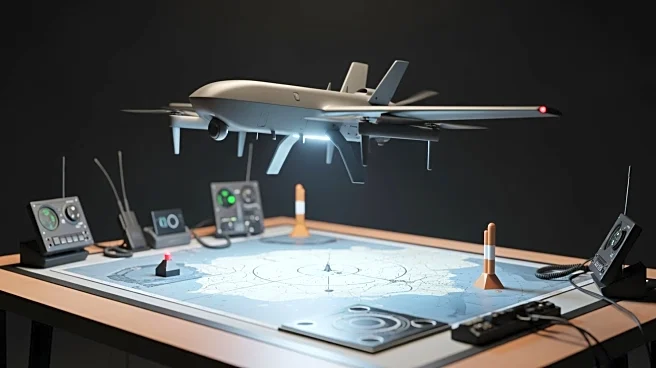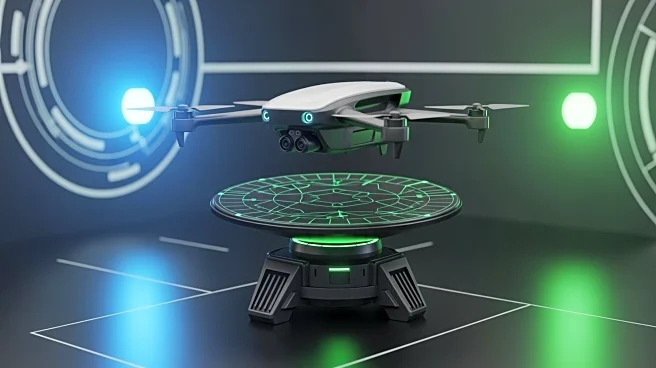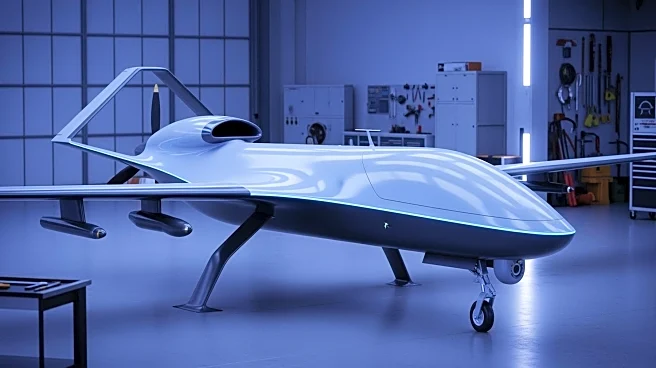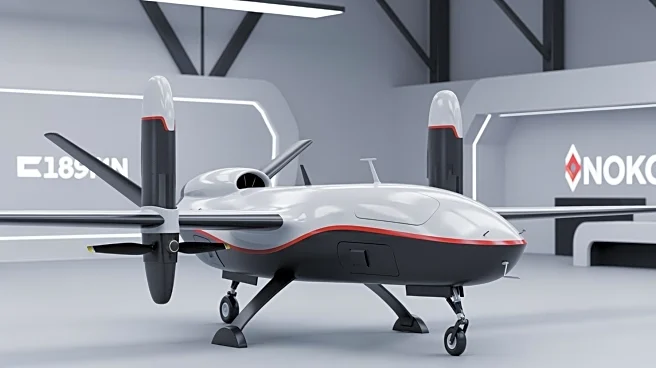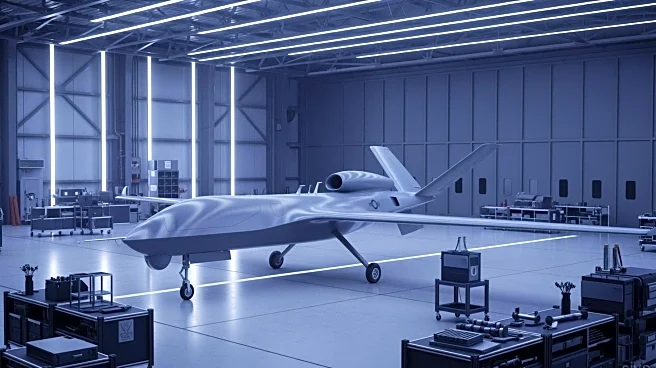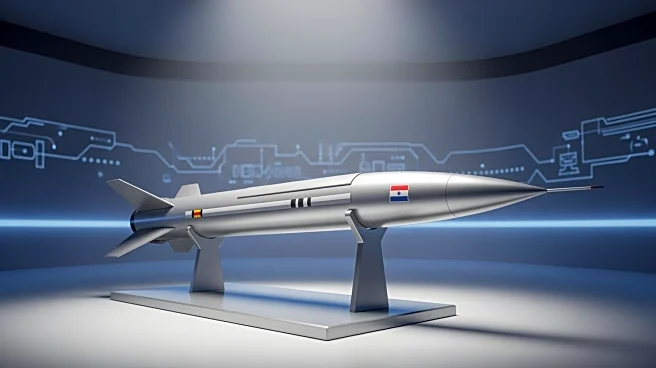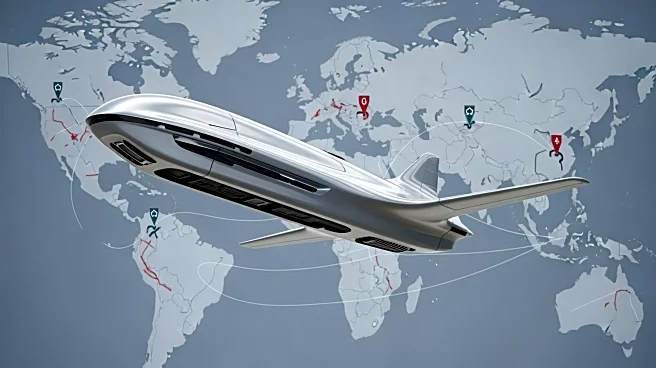What's Happening?
Shield AI has introduced the X-BAT, a high-end vertical-takeoff-and-landing (VTOL) collaborative combat aircraft, during a ceremony in Washington, D.C. The X-BAT is designed to expand U.S. and allied warfighting
capacity with its runway-independent capabilities. It features a 'fighter-class' engine from the U.S. Air Force F-16 and plans to use a thrust-vectoring nozzle for enhanced performance. The aircraft is intended to operate from trailers and ships, offering a range of over 2,000 nautical miles. Shield AI plans to begin VTOL flight testing in 2026, with full mission capability expected by 2028.
Why It's Important?
The unveiling of the X-BAT marks a significant advancement in military aviation technology, particularly in the realm of uncrewed combat aircraft. Its runway-independent design provides strategic advantages, allowing for greater flexibility and survivability in combat scenarios. The development of such advanced aircraft could enhance the U.S. military's operational capabilities and deterrence strategies. Additionally, the integration of Shield AI's Hivemind software, already used in various military programs, underscores the growing importance of autonomy in defense systems.
What's Next?
Shield AI plans to announce partnerships in the coming weeks to support the production and development of the X-BAT. The company aims to conduct VTOL flight testing by 2026 and achieve full mission capability by 2028. As the U.S. Air Force and Navy continue to develop their collaborative combat aircraft programs, the X-BAT could play a pivotal role in shaping future military strategies. The success of this project may influence other defense contractors to pursue similar innovations in autonomous combat aircraft.
